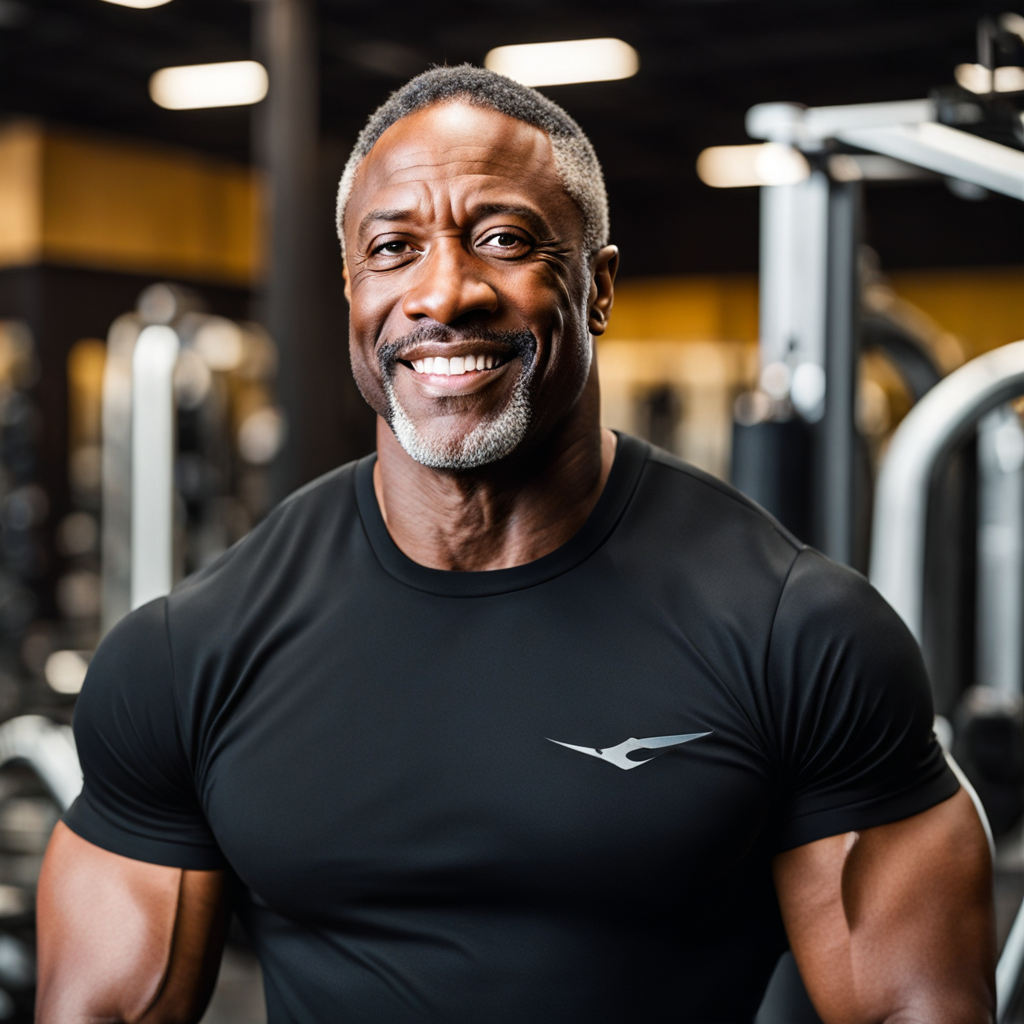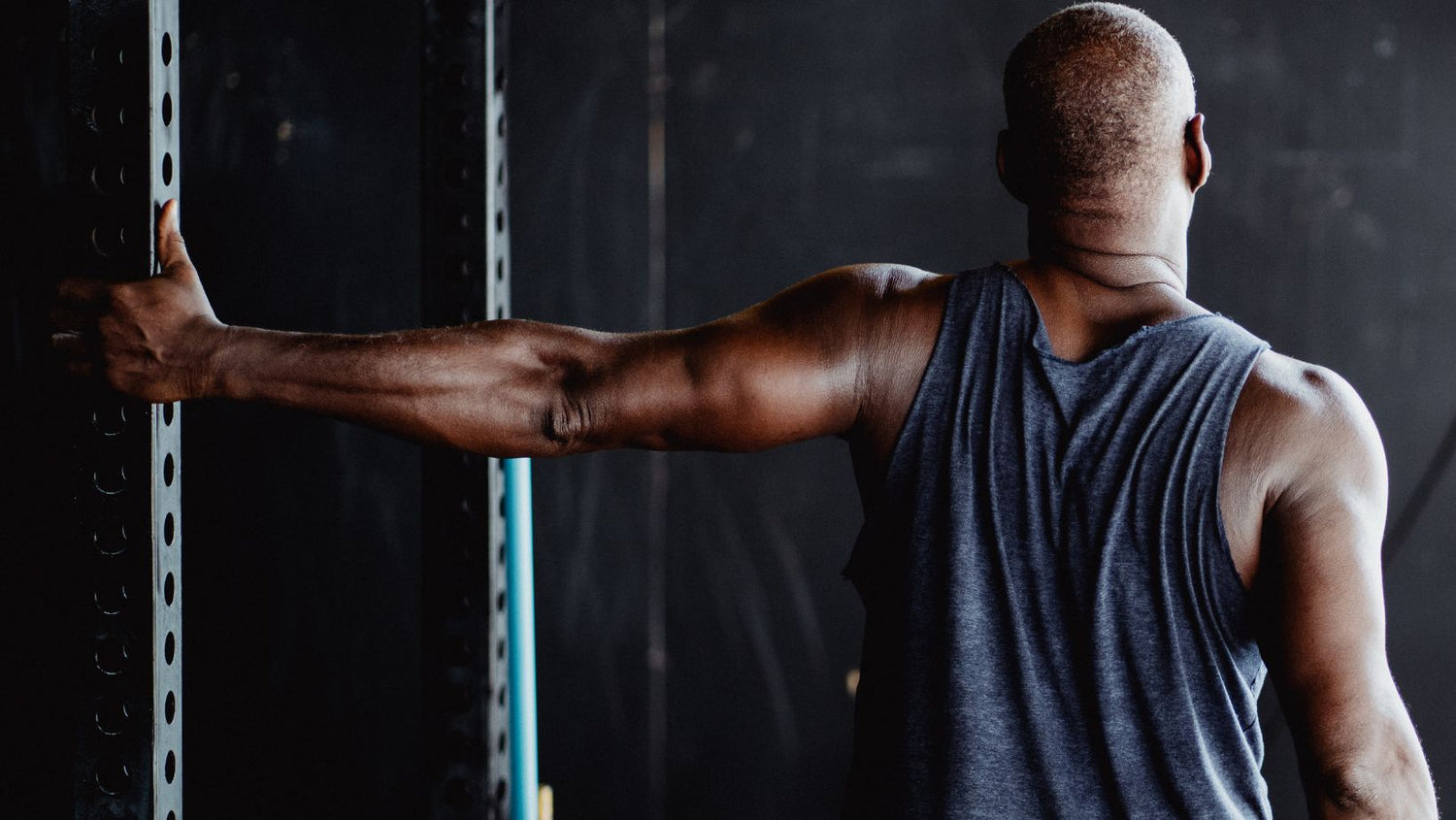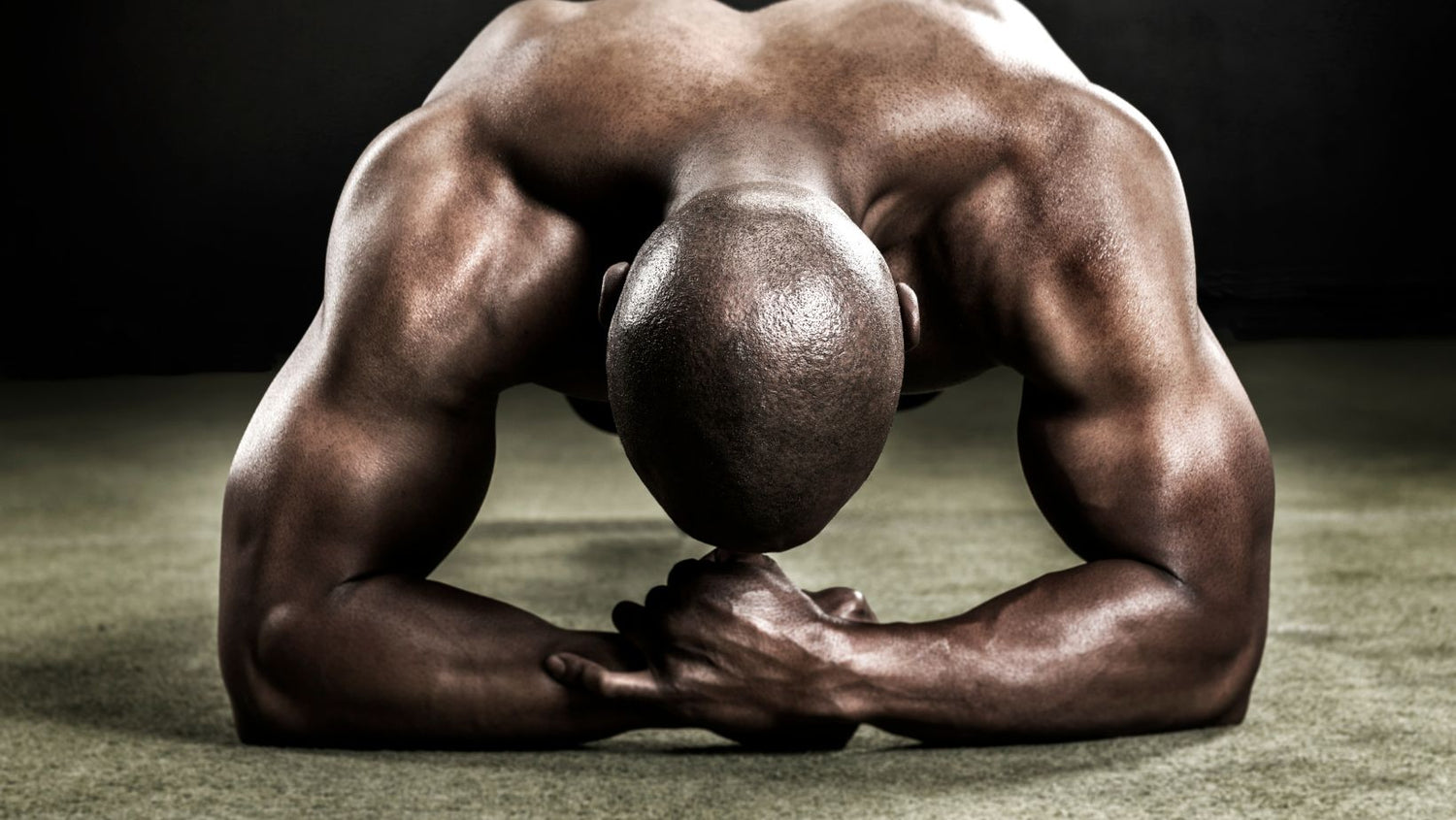Do you want huge traps that your tank top hangs off of? Barbell shrugs may be just the exercise you need. This weightlifting movement specifically targets muscles in the back, neck, shoulders, and trapezius for improved strength and posture. In this blog post, we'll discuss everything from proper technique to variations of this effective trap blasting exercise.
Muscle Groups Targeted by Barbell Shrugs
Barbell shrugs are a powerful exercise that target several key muscle groups, including the trapezius and latissimus dorsi. Performing this exercise in your routine can help build strength in your back, neck, shoulders, and traps. It also engages other muscles like the deltoid, rhomboid, and levator scapulae of the upper back. Strong traps enhance posture which can decrease spinal or shoulder disorders while generating force and increasing speed.
Trapezius and Latissimus Dorsi
Barbell shrugs are effective in improving upper back strength and helping to build a wider back. Specifically, the exercise targets the trapezius and latissimus dorsi muscles, as well as engaging other muscles such as the deltoid, rhomboid, and levator scapulae of the upper back. Consistently doing barbell shrug exercises can enhance overall posture by stabilizing the neck and shoulders while generating force and increasing speed. Strong traps also decrease spinal, neck, and shoulder disorders by enhancing posture during daily activities.
Deltoid, Rhomboid, and Levator Scapulae
Targets the shoulder muscles effectively, reduces the risk of shoulder injuries during workouts or sports activities, and increases flexibility of the upper body. These are just a few benefits of targeting your deltoid, rhomboid, and levator scapulae muscles through exercises such as barbell shrugs. You can improve your posture and overall upper body strength by incorporating these exercises into your workout routine.
- Targets multiple muscles in one exercise
- Improves posture
- Increases range of motion
Benefits of Barbell Shrugs
Barbell shrugs offer several benefits, including improving locks and posture. Strong trapezius muscles stabilize the neck and shoulders, reducing spinal, neck, and shoulder disorders. Barbell shrugs also allow individuals to lift more weight during other exercises and can help prevent exercise-related injuries by strengthening the targeted muscle groups. Overall, barbell shrugs are a great addition to any workout routine for individuals looking to build their traps or improve their overall performance in full-contact sports or Olympic weightlifting.
Improved Locks and Posture
Strengthening the upper trapezius muscles is crucial for proper posture and reducing neck and shoulder pain. The barbell shrug exercise specifically targets these muscles, helping to improve alignment of the spine. Here are some benefits of improved locks and posture:
- Reduced risk of spinal, neck, and shoulder disorders
- Improved overall body alignment
- Increased force generation during exercises
To perform a proper barbell shrug exercise:
- Position the bar on your quadriceps with feet hip-width apart.
- Hold the bar with an overhand grip facing down.
- Raise both shoulders towards your ears while maintaining a straight back and torso.
- Lower your shoulders slowly, holding for one second before repeating.
Some common mistakes to avoid include failing to raise your shoulders properly or not relaxing between sets.
In addition to traditional barbell shrugs, variations such as dumbbell shrugs or cable machines can also be effective in building trap muscles and improving locks/posture in gym-goers or athletic trainers alike.
Injury Prevention
Increased stability of scapulae, reduced risk of rotator cuff injuries, and healthy wrist positioning are some of the injury prevention benefits that can be gained from barbell shrugs. By engaging the trapezius muscles in your upper shoulders and neck during a proper barbell shrug exercise, you can strengthen your posture and decrease spinal, neck, and shoulder disorders. It is crucial to perform this exercise safely by maintaining a direct course with correct shoulder blade movements to avoid unnecessary muscle damage or mistakes like non-neutral posture or not raising the shoulders high enough. Barbell shrugs offer an efficient way for gym-goers and athletic trainers alike to improve their performance while minimizing injury risks.
Ability to Lift More Weight
Improving grip strength is crucial for lifting heavier weights during compound exercises. The barbell shrug targets multiple muscle groups in the upper back, shoulders, and neck, allowing for increased strength gains in those areas. This exercise can also help break through plateaus by challenging muscles with heavier weights and increasing resistance over time.
Proper Technique for Barbell Shrugs
Positioning the Barbell and Raising the Shoulders to the Ears
To perform a proper barbell shrug, start by positioning the barbell on the front of your quadriceps. Maintain a straight stance with slightly bent knees and ankles hip-width apart and hold the bar with an overhand grip and palms facing down. Next, raise both shoulders to your ears while maintaining a straight back and elevated torso. Hold for one count before repeating for desired reps.
It is important to follow proper technique when performing this exercise to prevent muscle damage or injury. Let your shoulders relax, maintain a neutral posture with knees bent and back erect, avoid tilting your head or rotating your shoulders too quickly during activity, raise shoulder blades, hold them in place between sets, and descend steadily instead of dropping weights immediately. For variation try straps as well as dumbbells or cable machines if you lack equipment but still want to target these muscle groups effectively.
Positioning the Barbell
Choose the appropriate weight for your level of strength, stand with feet shoulder-width apart and grip the barbell just outside your thighs, engage your core muscles to maintain good posture throughout the exercise. These are important steps to positioning the barbell correctly before beginning a barbell shrug. It is crucial to perform this exercise with proper form in order to avoid injury and reap its benefits.
- Choose an appropriate weight
- Stand with feet shoulder-width apart
- Grip the barbell just outside your thighs
- Engage core muscles for good posture
Raising the Shoulders to the Ears
To properly perform the barbell shrug exercise, exhale as you lift your shoulders towards your ears, keeping them in a straight line without rolling forward or backward. Hold at the top for a second, squeezing your traps tightly before lowering back down slowly. It is important to avoid using momentum or swinging to lift heavier weights than you can handle safely. Consistently performing this exercise with proper form can expedite muscle and trap development while improving posture and preventing injuries.
Preventing Muscle Damage During Barbell Shrugs

Barbell shrugs can be an effective exercise for building the upper back and shoulders, but incorrect form or technique can result in muscle damage and/or neck and back injury. To prevent injury while performing barbell shrugs, it is important to keep the shoulders relaxed, maintain a straight posture with slightly bent knees, and avoid rotating the shoulders too quickly during the exercise. It is also key to raise the shoulder blades and hold them in place at the top of each lift.
In addition to proper technique, taking pre-workout supplements may help prevent muscle damage during barbell shrugs by improving energy levels and reducing fatigue. Supplements containing ingredients such as caffeine, beta-alanine, or creatine may provide benefits for maintaining strength throughout your workout routine. By following these tips and techniques, you can maximize your results from barbell shrugs without risking injury or muscle damage.
Relaxing the Shoulders and Maintaining a Straight Posture
To perform a barbell shrug with proper form, it's important to focus on relaxing the shoulders and maintaining a straight posture. Here are some tips:
- Concentrate on keeping your shoulder blades down throughout the exercise.
- Engage your core muscles to maintain proper posture and prevent excessive leaning or arching of the back.
- Visualize a straight line from your head to your tailbone.
It's also important to avoid common mistakes such as rotating the shoulders too quickly or descending too quickly between sets. By following these tips, you can ensure that you're performing barbell shrugs safely and effectively while targeting key muscle groups in the back and shoulders.
Avoiding Shoulder Rotation and Descending too Quickly
To avoid shoulder rotation and descending too quickly during barbell shrugs, it's essential to keep the bar close to your body throughout the exercise. Additionally, rotate inward with both shoulders simultaneously as you lift to prevent any jerking or sudden drops. It is also important to control the descent of the weight while lowering it slowly and steadily instead of dropping it abruptly. By following these tips, you can safely and effectively perform barbell shrugs without risking injury or muscle damage.
Relaxing and Lowering the Shoulders between Sets
Allow yourself enough rest time between sets to allow your muscles to recover. During this time, consciously relax any tension in the shoulder muscles and focus on deep breathing exercises that promote relaxation. This will help you maintain proper form and technique while also conserving energy for later sets, ultimately improving overall workout performance. Remember, relaxing and lowering the shoulders between sets is just as important as performing the exercise itself.
Variations of Barbell Shrugs
To mix up your workout routine, there are a few variations to the classic barbell shrug. One option is using wristbands or neck bands for added resistance and muscle engagement. Another variation is the cable generator with a rope attachment, which allows for increased range of motion in the shoulders. Dumbbell shrugs with hand restraints can help target the traps more effectively by eliminating grip strength concerns. For an even greater challenge, try snare-hold shrugs to really work those upper back muscles.
Using Wristbands or Neck bands
Benefits of using straps during barbell shrugs:
- Provide extra stability and support for the wrists while holding heavy weight
- Reduce strain on the forearms, allowing for better focus on the trapezius muscles
- Can increase grip strength by preventing slippage of sweaty hands
How to properly use straps or neck bands for barbell shrugs:
- For straps, place them around your wrists before grabbing onto the barbell.
- For neck bands, put them around your neck first and then grab onto the bar with an overhand grip.
- Adjust band tightness as needed to provide enough support without restricting movement.
Different types of wristbands and neck bands available for barbell shrugs:
- Wrist wraps made from elastic material provide strong support and are adjustable in tightness.
- Leather wrist straps allow for a tighter grip on heavier weights but can be less comfortable than other options.
- Neck harnesses attach directly onto a weighted plate rather than a traditional barbell.
Cable Generator Variation with Rope Attachment
Advantages of cable generator variation with rope attachment over traditional barbell shrugs:
- Cable generator variation with rope attachment offers a greater range of motion than traditional barbell shrugs, allowing for better muscle activation.
- With the ability to adjust the weight and resistance, cable generator variations allow for more customized workouts.
Muscle groups targeted by cable generator variation with rope attachment:
- The trapezius muscles in your upper shoulders and neck are targeted by this exercise.
- It also engages the deltoid, rhomboid, and levator scapulae of the upper back.
Tips for proper form when performing cable generator variation with rope attachment:
- Keep your shoulders relaxed throughout the exercise.
- Maintain a neutral posture to avoid injury.
- Focus on raising your shoulders towards your ears while keeping your back straight.
Dumbbell Shrugs with Hand Restraints
Dumbbell shrugs with hand restraints provide numerous benefits for muscle development. By utilizing hand restraints, individuals can focus solely on targeting their traps without worrying about grip strength or losing control of the dumbbells. There are various types of hand restraint equipment that can be used during dumbbell shrugging exercises, including wristbands and neck bands. Depending on athletic level, recommended sets and repetitions for this exercise may vary to ensure proper form and avoid injury. Regardless of skill level, incorporating dumbbell shrugs with hand restraints into a pre-workout routine is an excellent way to strengthen upper back muscles and improve posture.
Alternatives to Barbell Shrugs
Include front raises with a kettlebell, dumbbell, or impact plate. These exercises target the front deltoids and also engage the traps and forearms. Front raises are an effective way to increase shoulder strength without putting as much strain on your back and neck as barbell shrugs can sometimes do.
Another alternative is using wrist or neck straps for cable machine shrugs. This variation allows you to focus solely on working your traps rather than worrying about grip strength. Additionally, dumbbell shrugs are another great option that eliminate concerns regarding grasping strength so you can concentrate more on targeting your traps.
Front Raises with Kettlebell, Dumbbell, or Impact Plate
Front raises with a kettlebell, dumbbell, or impact plate are an excellent way to target the anterior deltoids and improve shoulder mobility and flexibility. Seated front raises and standing front raises with alternating arms are two variations of this exercise that you can try out.
These exercises involve raising the weight from waist level to shoulder height while keeping your arms straight. Be sure not to use momentum when lifting the weights as it can lead to injury. This exercise is particularly beneficial for those who want toned shoulders and increased upper body strength.
Who Should Be Doing Barbell Shrugs?
Barbell shrugs are great for individuals looking to develop their back and shoulder muscles, specifically the traps and lats. They are commonly used by bodybuilders, powerlifters, athletes, and neck-builders. Full-contact athletes such as rugby or hockey players can also benefit from this exercise as it helps with balance and stability, while offensive linemen can use it to gain strength in order to face opponents frequently. It is important to use proper form when performing barbell shrugs as incorrect technique may cause injury.
Bodybuilders, Powerlifters, and Athletes
Bodybuilders, powerlifters, and athletes can benefit greatly from incorporating barbell shrugs into their workout routines. This exercise can improve upper body strength for bench pressing and other exercises as it targets the trapezius muscles in the upper back. Additionally, it increases grip strength for deadlifting and other exercises due to its demand on wrist stabilization. Finally, developed trapezius muscles provide improved aesthetics through better posture and a stronger overall appearance. These benefits make barbell shrugs an essential exercise for anyone looking to enhance their training performance at the gym or as an athletic trainer.
Full-Contact Athletes
For full-contact athletes, strengthening neck muscles is crucial to reducing the risk of injury from impact. Incorporating exercises like barbell shrugs can target the trapezius and levator scapulae muscles in the upper back and neck, which help stabilize and generate force during contact activities. Additionally, improving shoulder mobility through stretching or dynamic warm-ups can enhance throwing or tackling motions while maintaining proper posture. Enhanced balance during contact activities can also be achieved through targeted exercises like one-legged shrugs to improve stability and prevent injuries on uneven surfaces.
Bottom Line
Barbell shrugs are a highly effective exercise for strengthening the upper trapezius muscles, which is crucial for developing overall shoulder strength. With variations like behind-the-back shrugs and snatch grip shrugs, you can target different muscle groups and add variety to your workout routine. However, it's important to use proper form when performing barbell shrugs to avoid injury and maximize results. Keep your shoulders back and down, lift with your traps (not your neck), and don't lock out at the top of the movement. Incorporating barbell shrugs into your pre-workout routine can help you build stronger shoulders and improve overall athletic performance.






